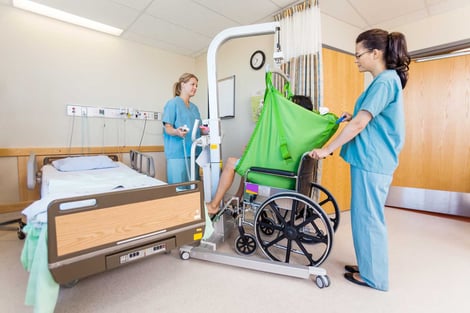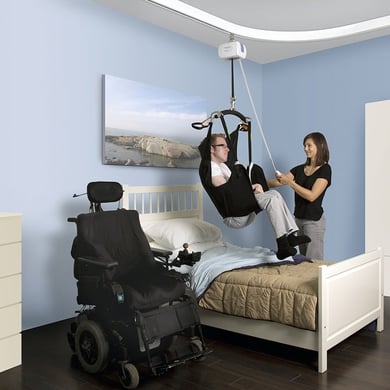Types of Patient Lifts
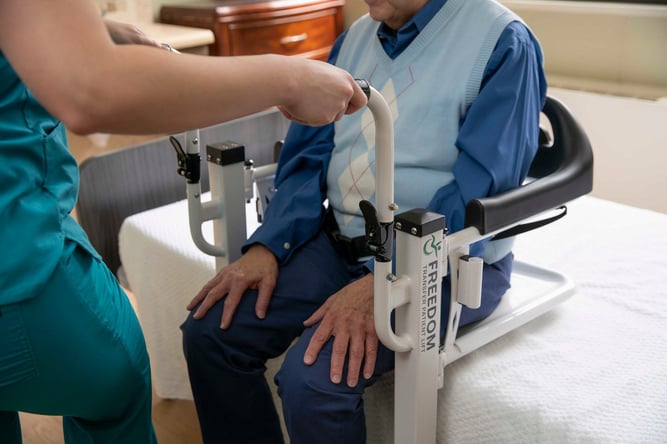
What are the most popular types of patient lifts?
What does a patient lift do?
A transfer device’s general function is to help patients get from one place (typically a bed) to another without the patient needing to move too much. Because of this, patient lifts need to be able to withstand the user’s weight and provide a method of getting them to the next destination. Different slings provide different methods of achieving this goal.
There are many reasons why a patient might need a lift:
- The patient suffers from partial or full immobility
- The patient has a disability impacting their balance while walking
- The patient is unable to stand due to bodily pain and needs help
What are the Different Types of Patient Lifts?
Transfer Lifts
Sit to Stand Lifts
Sling Lifts
Ceiling Lifts
What are Transfer Lifts?
For some patients using patient transfer devices, mobility is an issue but not completely impossible. Patients with limited mobility may prefer patient transfer chairs to cumbersome and often demeaning devices like slings and sit to stand lifts.
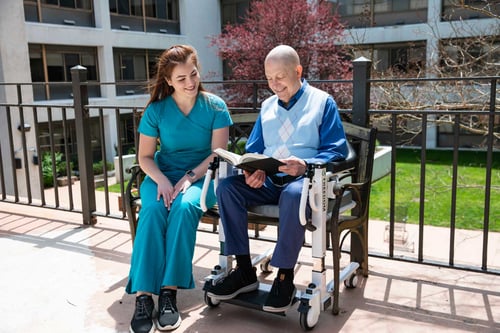
- Can hold themselves upright when seated
- Are not completely immobile
- Have the help of a caregiver
Freedom Mobile Patient Lift
If you would like to learn more about the different features and ways the Freedom Mobile Patient Lift can help, click below.
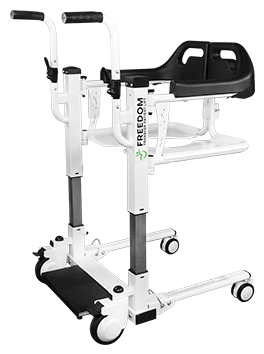
What are Sit to Stand Lifts?
Sit to stand lifts (also called Lift Ups, Stand Assist, or Stand-Up Lifts) are mobility assistance devices and can often be used for rehabilitation services. These can also be considered a type of sling lift depending on the design, however sit-to-stand lifts have unique advantages that should be discussed separately.

- Can sit and stand on their own but have difficulties with energy
- Is relearning how to sit and stand
- Needs help keeping themselves in a standing position
- Can support partial body weight when standing
What are Hoyer Lifts?
Hoyer lifts are often used for completely immobile patients and are designed to lift several hundred pounds safely. Most of the other lifts on this list cannot replace a sling lift for patients that cannot move on their own at all.
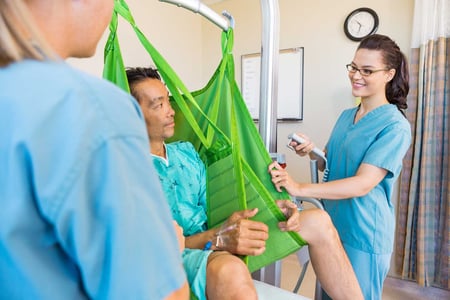 Hoyer Lifts
Hoyer Lifts
Who should use a Hoyer Lift?
Hoyer lifts are best for extreme cases of immobility, such as people that are:
- Completely disabled
- Too weak to assist with movement
- Bariatric
- Unable to sit up on their own
For the patients listed above, a Hoyer lift is the best solution for everything from general transfers to assistance to getting to the commode. While Hoyer lifts come with a lot of downsides, they’re excellent for trained caregivers who need to provide the bulk of the lifting and movement for their patients.
The FDA download for Hoyer lifts goes over some of the bigger concerns in great detail.
What are Floor Lifts?
Who should use a Floor Lift?

